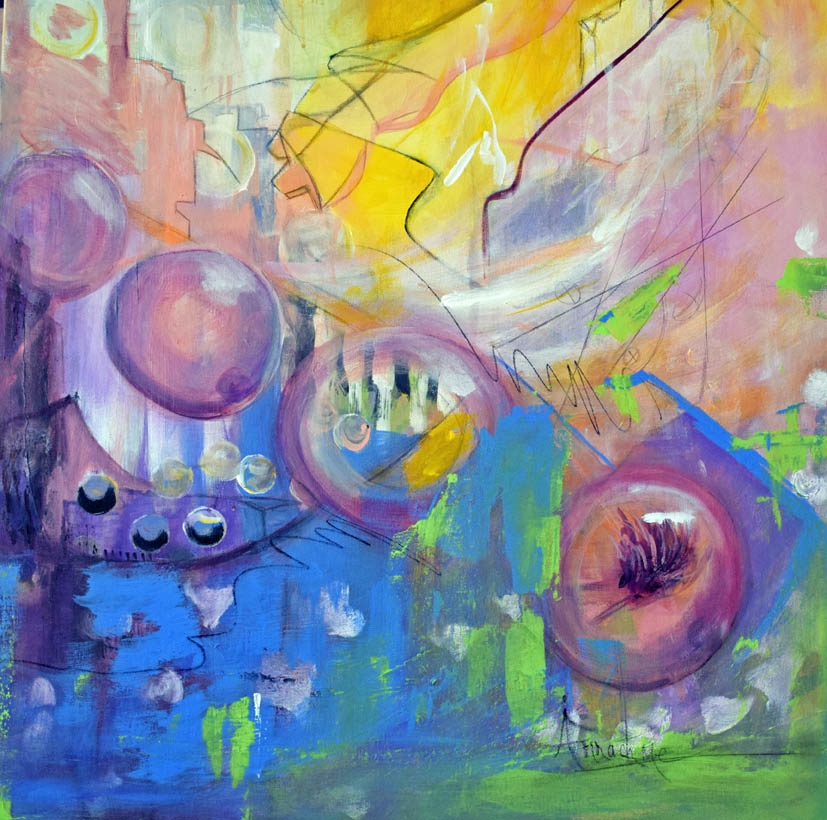Article #33 What Does It Mean To Paint In A Series?
By Arrachme
Painting in a series entails creating an interconnected body of work, typically by a single artist. A theme runs through the art so there is no doubt that they stem from the same creative mind. For collectors, this consistency in style can be captivating. They might fall in love with the thread that binds the paintings and seek out more work from that artist. Likewise, art enthusiasts may eagerly anticipate more creations and join the artist’s mailing list because they are intrigued with what might come next.
The Theme
A series can be characterized by a recurring motif, such as a particular shape or a sequence of shapes that permeate each artwork. Alternately, may manifest as a continuous flow of lines or a distinct color palette employed across multiple pieces. However, the true challenge lies in crafting a series that evokes emotional resonance through the series’ collective impact. This impact is exemplified in the Japanese sumi-e art, where few marks are on a sheet of paper can convey a profound depth of emotion. It can represent a most complex model from a minimalist approach. In the art of language, the word Zen can take us on a journey, encompassing an entire philosophy while simultaneously simply evoking the feeling of “stillness”.
Vincent Van Gogh
Vincent Van Gogh, renowned for his distinctive style, struggled to find recognition during his lifetime. Yet his posthumous acclaim underscores the enduring appeal of his work. Van Gogh’s art captivates viewers not only through his choice of subject but also through his expressive brushwork. His thickly applied oils and bold dynamic lines serve as an unmistakable signature, guiding the viewer’s gaze. The next time you visit a Van Gogh Museum, you might look for what key components that help you identify his work. It seems that his entire body of work could be seen as one series.
Picasso
Unlike artists who consistently work within defined series, Picasso’s body of work reflects an approach shaped by his life experiences. Influenced by his relationships with friends, muse, and spouses, Picasso’s artistic evolution is marked by distinct periods. A notable time was his blue period that commenced after he lost his best friend. The revolutionary cubist phase was inspired by shifting romantic entanglements.
Advancing in Series
As artists mature in their practice, they often gravitate towards working in series, a trend particularly evident once they have secure representation by dealers and patrons. While artists may still produce standalone pieces or conduct studies during series development, these preliminary works may offer collectors the opportunity to acquire a piece by an artist at a more desirable price point.
Conclusion
In essence, painting in a series entails more than just creating individual works, it is a deliberate exploration of themes, emotions, and techniques across a cohesive body of work. The 30” x 30” painting in this article is called “Qualia Playful Sequence”. It was created as a preliminary study to playful series of bright, happy colors, and closed curvilinear shapes that dance around a painting. Now that you are an expert series identifier, see if you can analyze this painting to find components that help you delve deeper into the artist’s journey.

